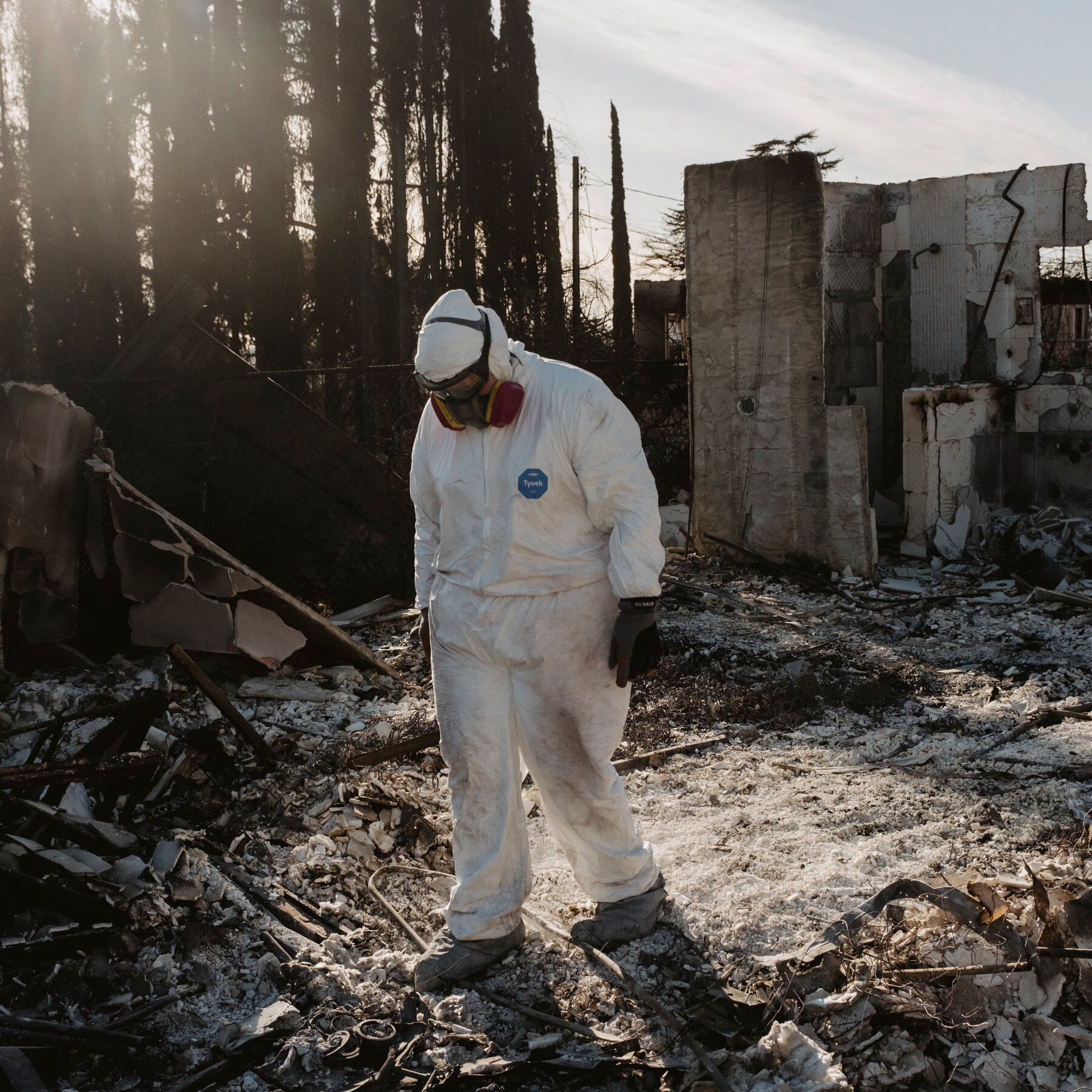Social Justice Policy Brief #180 | Charles Sweeney | October 31, 2025
The Disaster Gap
We’ve all seen the images on our screens — homes splintered, power gone, dazed residents wandering through shattered neighborhoods. They’re desperate for water, cell service, and food. Some are still searching for missing loved ones.
In those first chaotic hours after disaster strikes, one question echoes through every devastated community: Where is FEMA? This spring, in parts of Kentucky and Missouri, that question went unanswered for days. Local officials expected the familiar convoy of federal trucks, inspectors, and field officers — but the help never came.
In St. Louis, Missouri, Mayor Tishaura Jones publicly lamented that the Federal Emergency Management Agency “has not been on the ground” days after a deadly tornado. “We cannot shoulder this alone,” she told reporters, calling for faster federal support (The Daily Beast). Meanwhile, in Kentucky, frustration boiled over among state leaders.
Several Republican lawmakers accused FEMA of being unresponsive and disorganized. They said the agency “set up command centers far from the hardest-hit communities” and that many locals “refused to deal with FEMA any more because of how adversely they were treated” (News From the States). Even Governor Andy Beshear pleaded with President Trump to expedite a disaster declaration to speed recovery funds (Kentucky Lantern).
Fewer Workers, Slower Response
The slow response isn’t happening in a vacuum. Since January 2025, FEMA has lost more than 2,400 employees — nearly 10 percent of its workforce — through a mix of buyouts, retirements, and firings (Government Accountability Office). About 1,500 staffers left through voluntary buyouts or early-retirement programs.
In February, more than 200 probationary employees were abruptly dismissed during a government-wide “performance realignment,” many learning of their termination by email . Later that summer, another 23 IT specialists were fired after a cybersecurity breach. Four senior officials — including FEMA’s CFO — were also removed following an internal audit of hotel reimbursements (Associated Press).
The result has been predictable. FEMA’s Public Assistance grants, which fund infrastructure repairs, now take over 90 days on average to process — up from about two months in 2024. Individual Assistance awards, the direct cash help for survivors, have fallen roughly 14 percent year-over-year (Department of Homeland Security Inspector General).
Local emergency managers say they’re stretched too thin. “People who used to get site visits in 48 hours now wait a week or more,” one Louisiana parish director told The Advocate. “Some never see a FEMA badge at all.”
Modernization or Mismanagement?
FEMA leaders insist the agency is modernizing. New automation tools and digital case-management systems are supposed to “streamline assistance and speed recovery.” But internal reviews and watchdog reports show those tools aren’t ready to replace human expertise.
A veteran analyst told the Union of Concerned Scientists that morale has “cratered” since February’s mass firings — and warned that “you can’t automate compassion.” Governors and emergency directors across the South and Midwest are also sounding the alarm. The National Emergency Management Association warned in May 2025 that “the erosion of FEMA’s workforce undermines national resilience.”
Some states — including Florida and Texas — are creating their own “mini-FEMAs,” expanding local programs to fill federal gaps. But experts say those state efforts can’t replace FEMA’s national coordination role. As Mayor Jones put it after the St. Louis tornado: “We cannot shoulder this alone.”
Climate Warnings and What Comes Next
All of this comes at a moment when climate science points to more frequent and more severe disasters. The National Oceanic and Atmospheric Administration (NOAA) recorded a record 28 billion-dollar weather disasters in 2024. Projections show that number could climb further as global temperatures rise and atmospheric moisture fuels stronger storms, floods, and wildfires (NOAA Climate Report).
In short, the nation’s disaster curve is going up — just as FEMA’s staffing curve is going down. This widening gap threatens not only response times but also long-term recovery for low-income and rural communities that rely most heavily on federal assistance. Experts warn that this imbalance could leave the nation dangerously unprepared for back-to-back catastrophes.
Scientists have long cautioned that the U.S. is entering a “new normal” of overlapping crises — where one hurricane, wildfire, or heat wave hits before the last disaster is fully recovered. With the planet warming and extreme weather becoming routine, this may be the worst possible time for FEMA to be smaller, slower, and stretched thinner than ever.
Engagement Resources
- The Daily Beast: https://www.thedailybeast.com/st-louis-mayor-says-fema-still-hasnt-helped-with-tornado-recovery/
- News From the States: https://www.newsfromthestates.com/article/some-kentucky-republicans-echo-trumps-complaints-about-fema-after-latest-flood
- Kentucky Lantern: https://kentuckylantern.com/2025/05/21/as-tornado-disrupts-regions-tourism-economy-beshear-asks-trump-for-expedited-disaster-declaration/
- ABC News: https://abcnews.go.com/US/agencies-federal-workers-fired/story?id=118901289
- Associated Press: https://apnews.com/
- Government Accountability Office: https://www.gao.gov/
- Department of Homeland Security Inspector General: https://www.oig.dhs.gov/
- Union of Concerned Scientists: https://blog.ucsusa.org/shana-udvardy/trumps-6-worst-attacks-on-fema-in-the-first-100-days/
- National Emergency Management Association: https://www.nemaweb.org/
- NOAA Climate Report: https://www.noaa.gov/news

